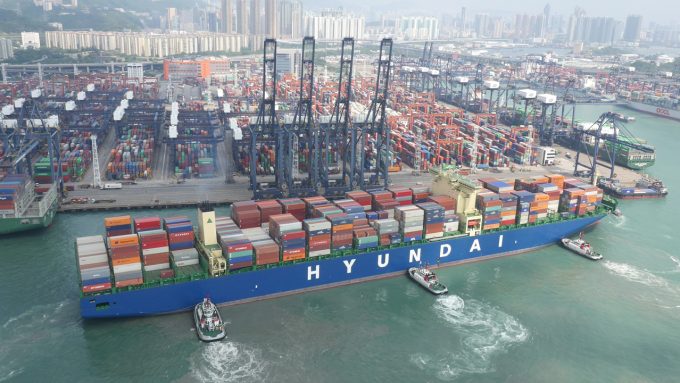HMM sees opportunities in Hapag-Lloyd’s exit from THE Alliance
HMM CEO Kim Kyung-Bae believes Hapag-Lloyd’s departure from THE Alliance will be a big opportunity ...

In the wake of the bankruptcy of South Korea’s Hanjin Shipping, compatriot Hyundai Merchant Marine (HMM) joining the 2M alliance may not be a done deal after all, according to Alphaliner.
HMM was notably excluded from the 13 May announcement of THE Alliance grouping of Hanjin, Hapag-Lloyd (now including UASC), K Line, MOL, NYK and Yang Ming, as it was in the midst of financial restructuring.
But HMM’s creditors demanded the carrier’s inclusion in a major alliance as one of the conditions of their continued support and HMM signed an MoU [memorandum of understanding] with Maersk Line and MSC on 14 July to join the 2M in April 2017, after its membership of the G6 alliance expires.
The surprise signing of the so-called 3M MoU completed HMM’s voluntary agreement restructuring and resulted in a debt-for-equity swap with creditors.
However, the demise of Hanjin is described by Alphaliner as a “game changer”, prompting a possible rethink of strategy by the 2M partners and HMM.
The analyst noted that there had been hints from MSC – specifically referring to a comment in Hamburg last week by Caroline Becquart, MSC’s senior vice president and head of Asia network and vessel sharing agreements.
Ms Becquart is reported to have said: “The memorandum of understanding is only a paper to agree to discuss. We are still in negotiation.”
Indeed, this is also the view of a UK contact close to the situation at Felixstowe, who told The Loadstar yesterday: “Don’t hold your breath on HMM joining 2M.”
And Alphaliner said: “So far, the 2M carriers are most aggressive when it comes to the deployment of additional capacity to cater for Hanjin’s former customers.”
The analyst said the 2M’s new TP-1/Maple transpacific service – introduced to target distressed Hanjin shippers – would deploy ships of 7,800-9,400 teu, which are significantly larger than the 5,000 teu vessels originally announced.
The view in Copenhagen and Geneva could well be that the primary rationale for HMM’s acceptance into the 2M – increased transpacific market share – has changed, given that the 2M partners are already grabbing a big chunk of the spoils of Hanjin’s sudden exit.
However, post-Hanjin, HMM is in a much stronger position – to all intents and purposes, it has now become the “national” line of South Korea, given that it is majority owned by the state-owned Korea Development Bank (KDB).
The South Korean economy remains heavily dependent on exports, and world manufacturing titans such as Samsung and LG were loyal supporters of Hanjin, with the former shipping around 40% of its products with the carrier and the latter 20%.
Meanwhile, Hanjin’s collapse has dented the market share of THE Alliance. According to Alphaliner data, the five remaining members will have a combined market share of 28% on the transpacific trade and 23% on Asia-Europe, compared with 35% and 28% with Hanjin’s capacity contribution.
Ironically, having excluded it from membership originally, THE Alliance partners could now be making overtures to HHM: the line could find itself top prize in a beauty contest.
Comment on this article